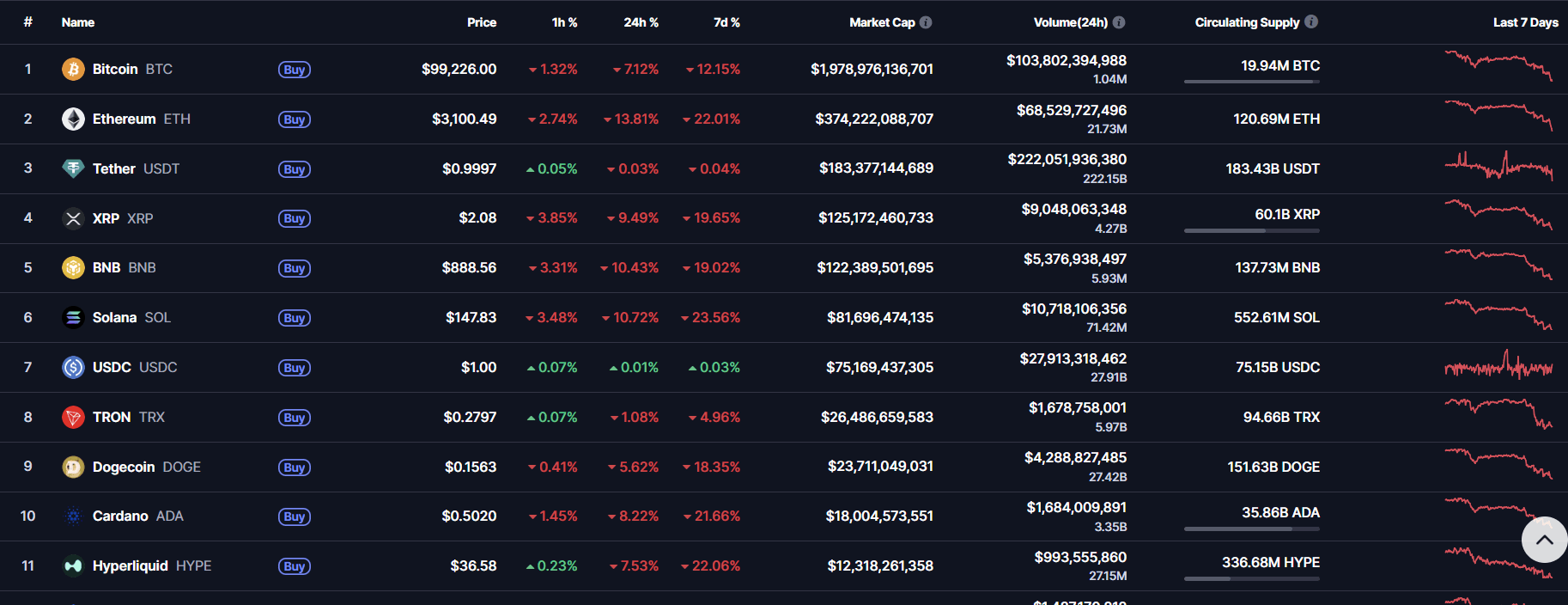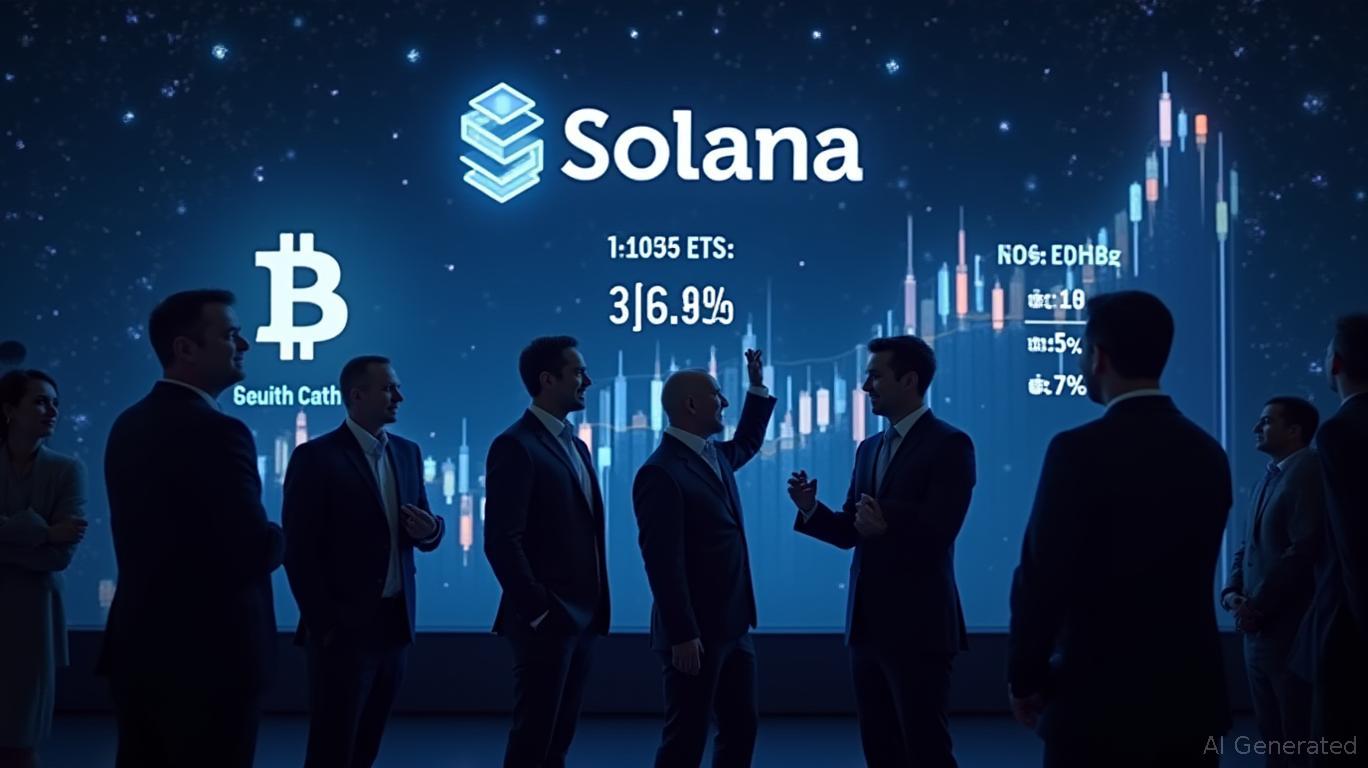Bitcoin News Update: Bitcoin Decline Underscores Dollar Strength While Fed's Warnings Dampen Hopes for Trade Agreement
- Bitcoin fell below its 200-day SMA on October 30, signaling bearish momentum as the dollar hit a three-month high amid Fed caution. - A U.S.-China trade deal reduced tensions but failed to boost crypto, with Bitcoin dropping 4% despite tariff cuts and cooperation pledges. - Divergent central bank policies (ECB/BOJ inaction vs. Fed uncertainty) fueled dollar gains, pushing EUR/USD to a two-week low and USD/JPY to an 8.5-month high. - Gold and crypto faced downward pressure from dollar strength and geopoli
On October 30, Bitcoin slipped beneath its crucial 200-day moving average, indicating a resurgence of bearish sentiment as the U.S. dollar soared to its highest level in three months. This dollar rally was fueled by the Federal Reserve's cautious approach and a softening in U.S.-China trade frictions. The dollar index (DXY00) reached 99.72, the strongest since August 1, after Fed Chair Jerome Powell made hawkish comments that tempered hopes for a rate cut in December, according to
The Federal Reserve's latest moves highlighted its prudent outlook. On October 29, the Federal Open Market Committee (FOMC) lowered the federal funds rate by 25 basis points to a range of 3.75%-4.00% and revealed plans to end quantitative tightening by December 1, according to

Developments in U.S.-China trade relations further complicated the market landscape. President Donald Trump and Chinese President Xi Jinping agreed to lower U.S. tariffs on Chinese imports from 57% to 47% and committed to working together on fentanyl regulation and rare earth mineral supply, Coindesk reported. Although this alleviated global trade tensions and benefited risk assets, Bitcoin was unable to benefit from the positive sentiment, dropping 4% in the 24 hours after the agreement,
The dollar's rally was also supported by differences in central bank policies. The European Central Bank (ECB) kept its rate steady at 2.00% despite stronger-than-expected Eurozone GDP growth of 0.2% for the quarter and 1.3% year-over-year, Nasdaq reported. Meanwhile, the Bank of Japan (BOJ) maintained its 0.50% policy rate, with Governor Kazuo Ueda stating that more information was needed on domestic wage trends, according to Nasdaq. These policy divergences boosted the dollar against both the euro and yen, with EUR/USD dropping to a two-week low and USD/JPY climbing 0.94% to its highest in eight and a half months, Nasdaq reported.
Gold, typically seen as a safe haven, also lost ground as the dollar strengthened and geopolitical risks eased. Spot gold fell 2.85% to $2,654.69, pressured by outflows from ETFs and the U.S.-China trade agreement,
Uncertainty around Fed policy and trade developments created a mixed backdrop for financial markets. While the S&P 500 and Nasdaq 100 reached new record highs, cryptocurrencies struggled due to the strong dollar and profit-taking in equities, Nasdaq reported. Analysts at BofA Securities observed that Powell's comments "challenged market expectations for a December rate cut," reinforcing the dollar's short-term strength,
Disclaimer: The content of this article solely reflects the author's opinion and does not represent the platform in any capacity. This article is not intended to serve as a reference for making investment decisions.
You may also like
Ethereum Crash Deepens: Can the $3K Line Hold or Will It Break Next?

Bitcoin Updates: Swiss Crypto Lending Offers 14% Returns Alongside Bank-Backed Insurance
- Swiss crypto lender Fulcrum offers 14% APR on stablecoins with Lloyd's insurance and FINMA regulation. - Platform uses 50% LTV over-collateralization and institutional-grade security to mitigate market risks. - Targets inflation-hedging investors by bridging traditional finance gaps with insured crypto yields. - Competes with alternatives like Bitget's zero-interest loans but emphasizes regulatory compliance and capital preservation.

Bitcoin News Update: Analyst Highlights How MSTR's Convertible Bonds Prevent Forced Bitcoin Sales
- MSTR's convertible debt structure allows debt repayment via cash, stock, or both, avoiding Bitcoin sales during market downturns. - The company raised €350M through a 10% dividend-bearing euro-denominated preferred stock offering to fund Bitcoin purchases. - Q3 results showed $3.9B operating income from Bitcoin gains, driving a 7.6% stock surge to $273.68 post-earnings. - Risks persist if Bitcoin fails to rally in 2028, potentially forcing partial liquidation amid $1.01B 2027 debt obligations. - MSTR hol

Solana News Today: Solana ETFs Surpass Bitcoin as Staking Returns Attract Institutional Investments
- U.S. spot Solana ETFs (BSOL/GSOL) attracted $199M in 4 days, outperforming Bitcoin/Ethereum ETF outflows. - 7% staking yields drive institutional inflows as investors rotate capital from major crypto assets. - Despite ETF success, SOL price fell below key support levels, raising concerns about $120 price floor. - Strategic staking and treasury purchases boosted Solana's institutional appeal, with $397M in staked assets. - Market remains cautious as ETF competition intensifies, with Bitwise's BSOL outpaci
